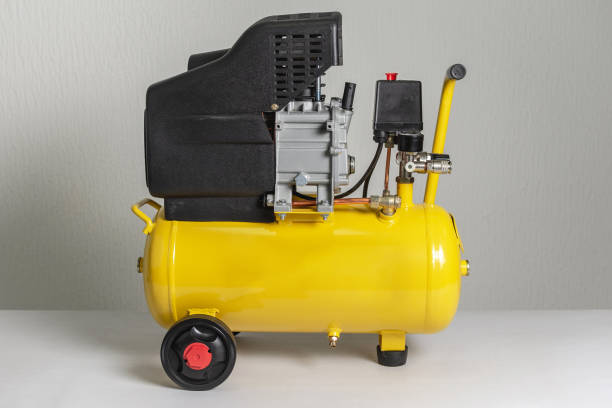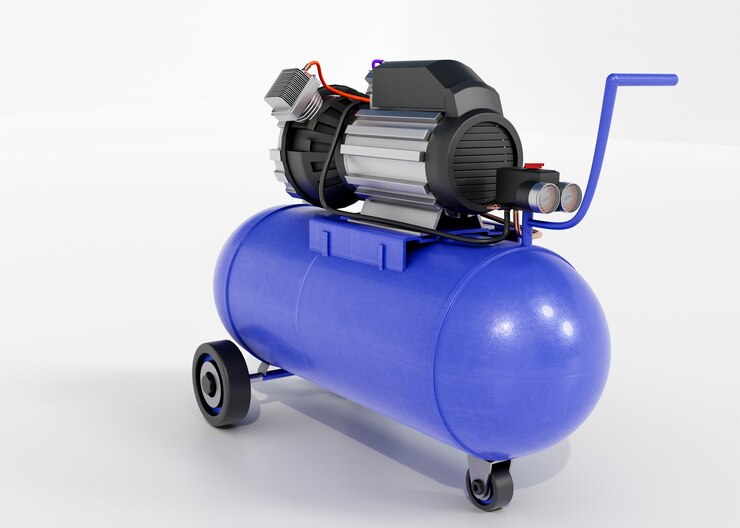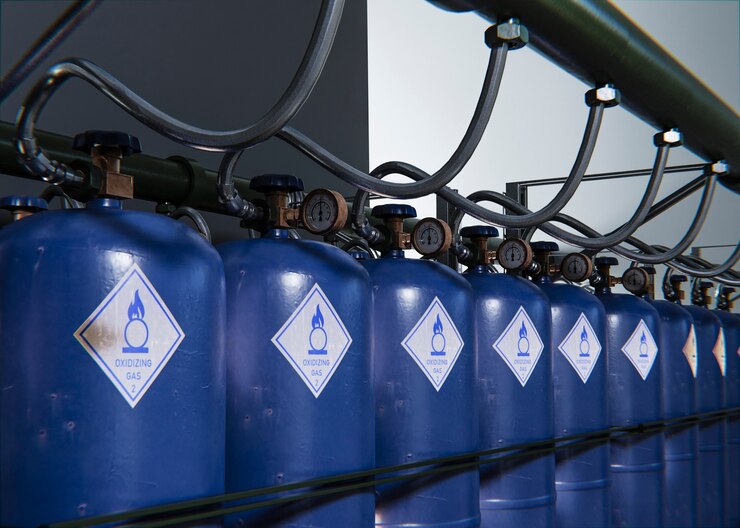Unlocking benefits of small Biogas compressor Potential
Compact Biogas Compressors: Energizing an Ecological Future
Biogas is becoming more and more popular as a clean and effective energy source. It is a sustainable fuel produced from the breakdown of organic waste. But before raw biogas can be fed into natural gas networks or used as fuel for automobiles, it must be converted into biomethane. Small biogas compressors are useful in this situation.
This article delves into the realm of small biogas compressor, examining their uses, advantages, and important implementation factors. You may take advantage of biogas’s potential and help create a more sustainable future by being aware of these factors.
What is a Small Biogas Compressor?
An apparatus used to boost the pressure of raw biogas generated by anaerobic digestion systems is called a tiny biogas compressor. Methane, carbon dioxide, and other gases combine to form biogas, which normally requires pressure to be increased to meet grid injection standards or for direct-use applications.
Due to their tiny size and modular design, small biogas compressor is perfect for on-site use in landfills, food waste processing facilities, farms, and wastewater treatment plants. Compared to industrial-scale biogas plants, its smaller size is suitable for applications with lower biogas volumes.
Small Biogas Compressors: Harnessing Biogas’s Power for Significant Advantages
The renewable fuel biogas, which is produced from organic waste, presents a viable option for clean energy. But before raw biogas can shine, it needs to be upgraded. Here are biogas compressors, and portable power plants that provide a host of advantages:
Biogas that has been upgraded and has a greater methane concentration can be used more effectively for grid injection, automotive fuel, and power generation. Just think of how much more biogas you can get!
- Improving the Quality of Biogas:
Compact compressors serve as purifiers by eliminating contaminants such as hydrogen sulfide and carbon dioxide. As a result, the biogas burns cleaner, lowering harmful pollutants and improving the environment.
- Energizing On-Site Generation:
CHP (combination heat and power) systems can be powered by upgraded biogas. This results in producing heat and power for consumption locally, decreasing reliance on the grid, and boosting energy security.
- Energizing an Ecological Future:
For automobiles, compressed biomethane offers a sustainable and clean substitute. We can reduce our reliance on fossil fuels and promote greener transportation by using this strategy.
- Maximizing the Use of Biogas:
Compact biogas compressors are the epitome of adaptability. They make it possible to use improved biogas for a variety of purposes, boosting its value and reducing waste.
- Cost-Effective Transportation:
Compared to raw biogas, upgraded biogas with a greater methane content requires less volume for transportation. This results in considerable logistics cost reductions.
Compact biogas compressors are catalysts for a sustainable future, not merely machinery. They open the door to cleaner energy, lower emissions, and a more resource-efficient future by realizing the full potential of biogas.

Compact Biogas Compressors: Providing Sustainable Power for a Range of Uses
Biogas is a renewable fuel that is produced when organic waste breaks down. It has a lot of promise. To reach its maximum potential, though, biomethane must be upgraded. Small biogas compressor fills this need and is essential in several industries, including:
- Farms:
Creating useable energy from manure and agricultural waste! Small compressors enhance biogas for the production of electricity on farms, lowering dependency on the grid and fostering energy independence.
- Wastewater Treatment Facilities:
Converting refuse into a useful asset! It is possible to compress and inject methane that is recovered during sewage treatment into the gas grid to provide income or balance the plant’s energy usage.
- Landfills:
Using landfills to release stored energy Methane-containing landfill gas can be cleaned up, used to generate electricity using tiny biogas compressor systems, or turned into clean car fuel.
- Facilities for Processing Food Waste:
Don’t waste and don’t want! Food processing waste that is organic can be a useful source of biogas. This biogas can be upgraded for a variety of uses through small-scale compression, advancing the circular economy.
- Distributed Biogas Upgrading:
Encouraging the environmental movement! In this new trend, small biogas compressors are essential components. They make it possible to incorporate renewable biogas generated at smaller facilities into the natural gas network, promoting the development of a more sustainable energy environment.
These industries can generate income streams or energy through the use of biogas compressors, which will not only help the environment by lowering dependency on fossil fuels but also boost their bottom lines.
Important Factors to Take into Account When Choosing a Small Biogas Compressor
Utilizing a small biogas compressor is a potent way to fully utilize biogas. But selecting the best compressor necessitates giving serious thought to several factors:
- Biogas Flow Rate:
Capacity matching is crucial! It is crucial that the compressor can manage the anaerobic digestion system’s pace of biogas generation. If your biogas flow is too fast for your compressor, bottlenecks will form and efficiency will be hampered.
- Biogas Composition:
Understanding the composition of your biogas Your biogas’s methane content directly affects the amount of upgrading that is necessary and, ultimately, the compressor that is chosen. Make sure your compressor matches the methane content of your biogas because they are made to handle different types of biogas compositions.
- Desired Output Pressure:
Pressure is important for the desired output! The intended usage of the upgraded biogas determines the target pressure. For example, grid injection necessitates higher pressure than using biogas for on-site power generation. It is important to select a compressor that can produce the required output pressure.
- System prerequisites:
Going beyond the compressor alone! Take into account elements such as space availability, installation simplicity, and required continuous maintenance. For small-scale applications, compact and modular designs are perfect, but long-term operation depends on convenient access for maintenance.
- Regulatory Compliance:
Adhere to the law strictly! Different locations may have different rules for using compressors and upgrading biogas. To prevent any compliance difficulties, make sure the compressor you have chosen complies with all applicable local regulations.
Maximize Your Potential with Biogas by Selecting the Best Small Biogas Compressor
Choosing the right biogas compressor is essential to realizing the full potential of your biogas system. By increasing the pressure of biogas, these specialized devices facilitate its effective storage, transportation, and use in a range of applications. However, choosing among the many available compressor options might be intimidating. Do not be alarmed! You will gain the necessary knowledge from this guide to enable you to make an informed choice.
Important Things to Think About:
- Flow Rate:
Make sure the compressor is capable of producing as much biogas as your system can. In cubic meters per hour (m3/h), units are rated.
- Discharge Pressure:
Establish the pressure at which your compressed biogas should be released. This is dependent on the intended use, such as supplying natural gas to the grid or running generators.
- Power Source:
Verify that the compressor can be powered by the power source you have on hand. Single-phase or three-phase versions are commonly available for small biogas compressors.
- Upkeep Needs:
Give priority to compressors that require simple maintenance procedures to reduce downtime and guarantee peak performance.
- Noise Level:
The noise level should be taken into consideration, particularly if the compressor will be placed close to residential areas.
Extra Things to Think About:
- Safety note:
Biogas might catch fire. Select a compressor with integrated safety measures, and make sure the installation area has enough ventilation.
- Brand Reputation:
Choose a manufacturer with a solid reputation for producing dependable and effective compressors.
- Customer assistance:
To handle any technological problems, look for a supplier who provides easily accessible customer assistance.
You may easily choose the ideal compressor by carefully weighing these considerations. This gives you the ability to get the most out of your biogas system and turn trash into a sustainable and clean energy source.
Avoid Burnout: Prioritizing Safety with Compact Biogas Compressors
Although biogas compressors are tremendous sources of sustainable energy, safety cannot be compromised. As biogas is combustible, give these safety measures top priority:
- Location is Crucial:
Install far from sources of ignition in an area with good ventilation.
- Go through the manual:
Observe safety instructions and emergency protocols provided by the manufacturer.
- Continual Upkeep:
To stop problems, schedule inspections and replace worn-out components.
- Post Clear Signage:
Indicate that this is a “Biogas Zone” and include contact details for emergencies.
- Educate Your Group:
Inform staff members on safe operation and maintenance, which includes using PPE as needed. You can safely and effectively utilize the power of biogas by giving these procedures priority.
Conclusion:
There’s just one option left for anyone looking for a dependable and effective solution for their tiny biogas system: the LEIYAO compressor. We are enabling you to fully utilize your biogas because of their emphasis on silent operation, easy maintenance, and outstanding performance. Visit our website right now to learn more about the LEIYAO series and to start exploring the endless possibilities for sustainable energy.



